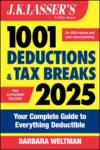Year-End Planning and the Alternative Minimum Tax
As the end of the year approaches, many taxpayers engage in year-end tax planning to minimize their tax bill for 2011. This year, with widespread tax uncertainty on a number of fronts, year-end planning is more difficult. This is especially so with respect to the alternative minimum tax (AMT). Here is some information to help you plan your year-end moves in light of the AMT.
AMT Rules for 2010
The AMT is a shadow tax system that started in 1969 to ensure that wealthy taxpayers pay at least some tax. Since then, the system has been transformed, tweaked, and modified, and now affects over 3 million taxpayers annually.
Each year for the past several years, the exemption amounts for the AMT have been increased to maintain the number of taxpayers subject to the AMT. This has been called a “patch.” Without a patch for 2010, the number of taxpayers owing AMT could exceed 25 million. The exemption amounts for 2010 likely will be increased to:
- $72,450 for joint filers (up from $70,950 in 2009)
- $47,450 for singles and heads of households (up from $46,700 in 2009)
- $36,225 for married persons filing separately (up from $35,475 in 2009)
Another important aspect of the AMT patch has been to allow most nonrefundable personal credits to offset not only regular tax but also the AMT. This will likely be part of the patch for 2010. Note: Special legislation is needed to permit the home energy credit for adding insulation, storm windows, etc. to offset AMT in 2010.
Year-End Moves
If you expect to be free of the AMT in 2010, you can reduce your tax bill by:
- Preparing state and local taxes. This includes your property tax bill and state income taxes that would otherwise be due in early 2011.
- Exercising incentive stock options. The discount on the options otherwise subject to AMT will not impact you.
The following year-end moves can cause you to become subject to the AMT, so proceed cautiously:
- Taking capital gains. Gains may boost income to exceed the AMT threshold. But be sure to put investment considerations before tax results.
- Receiving year-end bonuses. Consider deferring receipt of the bonus to a future year if your employer gives you this option and you are confident of your employer’s financial stability.
- Paying miscellaneous itemized deductions, such as deductible legal fees. Consider delaying payment until 2011 where appropriate and possible.
- Taking your first required minimum distribution from an IRA and/or qualified retirement plan. Consider waiting until April 1, 2011, to take the first distribution, but recognize that this means taking a second distribution in the same year; the second distribution is due by December 31, 2011.
- Converting to a Roth IRA. If you’ve made a conversion in 2010, you can defer half the resulting income to 2011 and half to 2012; this will minimize your 2010 income for regular tax and AMT purposes.
Before taking any year-end action, discuss your personal tax situation with your tax or financial advisor.
Holding period
The length of time that an asset is owned and that generally determines long- or short-term capital gain treatment.



